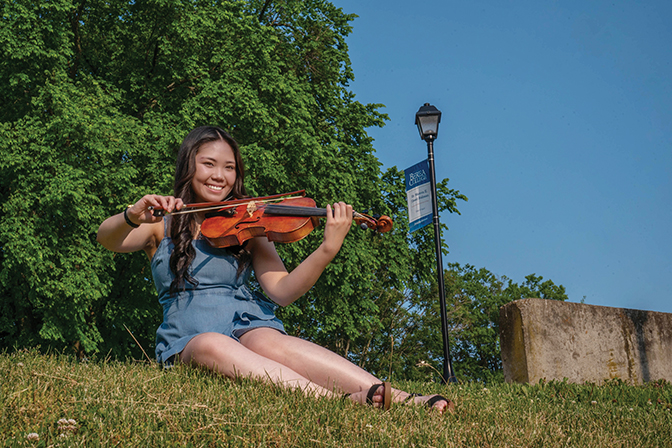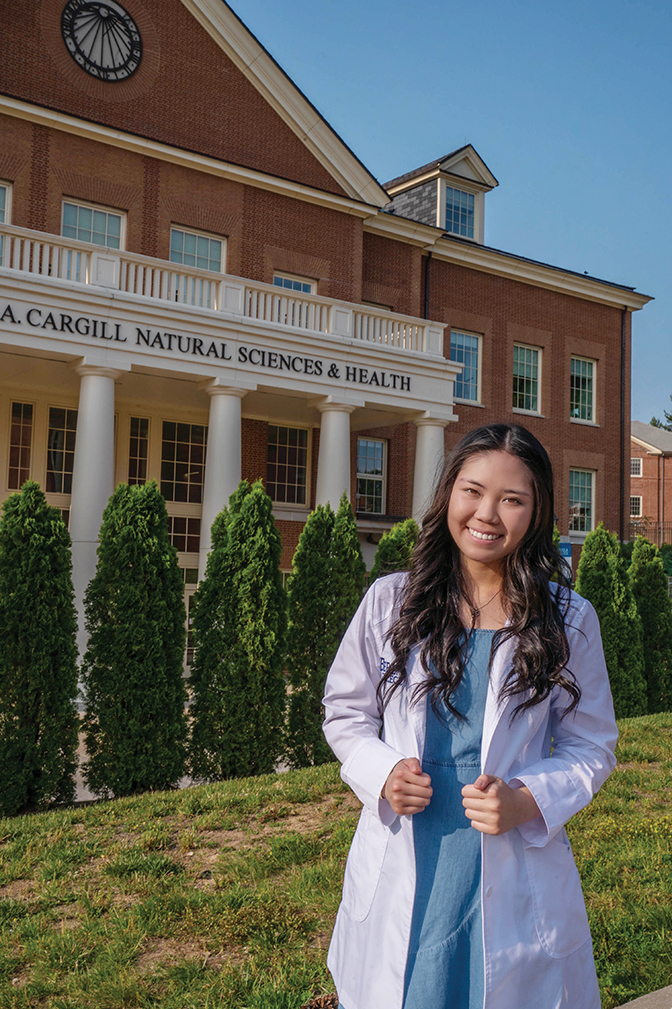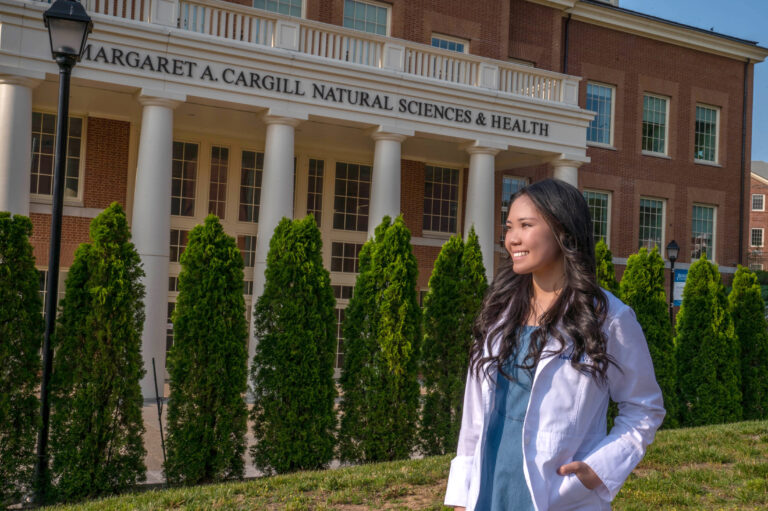Kimberly’s story begins in Portland, Ore., where she lived with her mother and grandparents. Her mother had a lot of responsibility, worked primarily as an accountant but also worked weekends to make ends meet.
“I saw how hard my mom worked,” Kimberly ’26 said. “I wanted to get a career where I would be able to have enough money to support her and give back to her what she has done for me.”
From early on, things were pretty difficult for Kimberly, having to split time between her parents’ homes and navigate cultural stigmas related to divorce. This was compounded sometimes by the usual growing pains many young people face. In kindergarten, though Kimberly was just learning to write, the kids at school were giving her a hard time about her handwriting. But adversity moved her to focus on perfecting her script. Soon she was learning calligraphy.

When it came time to learn music, Kimberly faced more difficult issues. In the fourth grade, Kimberly wanted to play the cello and was a fan of Yo-Yo Ma, the world-renowned cellist. She was fascinated by his Bach Cello Suite and became inspired by the cellist’s words about how music could bring people together. But cellos are very expensive. Her mother bought her a violin, a Cremona SV-75 Novice, instead.
But people expressed their doubts about how good a violinist she could become given how expensive music lessons can be. The good news is Kimberly had a kind teacher who cared about her and offered her lessons. Just as she had done with perfecting her handwriting, Kimberly worked to perfect her violin playing. Focusing on music and school gave her an outlet for dealing with messages from some people that suggested Kimberly’s financial and family situation meant she was limited in what she could achieve.
“I always felt like it’s better to be alone than to be with other people because I didn’t want to be constantly hurt,” she said. “With the circumstances going on in my life at the time, I decided to distract myself from those feelings with schoolwork.”
Her focus paid off. Kimberly joined the symphonic strings orchestra her first year of high school. By her junior year, she became the concert master. And though she loved music and was proving people wrong about her limitations, Kimberly didn’t have any plans to be a professional musician. She also loved math and science and saw those subjects as a path to the financial security that would allow her to take care of her mom. Her grandfather, a bit of a math wiz, introduced her to the discipline and encouraged her to think of careers in the medical field.

Kimberly developed an interest in becoming a pharmacist, partly because she discovered the wonderful world of biomolecules, but also because she didn’t see music and medicine as necessarily different because music can be a kind of antidepressant.
“[Music] worked in my body like a medicine or cure,” she said. “I liked how it correlated to different kinds of medicine.”
So, she studied hard and practiced hard. By the end of high school, the young woman who some people felt would be limited by social and financial issues was not only a classically trained violinist, she was also the class valedictorian. That meant she had some college options, though not many of them all that great in a financial sense.
Kimberly applied to many prestigious schools—and was wait-listed for most of them. She discovered Berea College through QuestBridge, an organization dedicated to helping low-income students attend college.
“Originally, I thought Berea couldn’t be real,” she said. “There was no way Berea College would pay tuition for a student.”
She applied anyway, and about the same time she was accepted, she also received an acceptance letter from the University of California, Berkeley. Though closer to home and very prestigious, Berkeley also came with quite the price tag. Going there would require big loans, and Kimberly also thought of the size of the school, about how difficult it would be stand out at a large school or to get individualized attention.
On the other side of the continent, Berea was a bit of a mystery. Kimberly wasn’t familiar with Kentucky, had barely heard of the place, and people were telling her it was rural. They didn’t understand why she would want to go there. Though doubtful of her in the past, people now were telling her she was prepared for so much more than attending a “random” school in Kentucky.
I thought it might be a good place for me to grow because I’d never been to that side of the country. You have to experience different worlds. I didn’t really know much, but I was still curious to know what it was like.
Kimberly ’26
“I thought it might be a good place for me to grow because I’d never been to that side of the country. You have to experience different worlds. I didn’t really know much, but I was still curious to know what it was like.”
Once Berea appeared to be a real place that she would consider going to, Kimberly began to research more about it. She was then invited to the Berea Bridge program over the summer. She could take a couple of classes and get to know the place and get her first job. The program paid for a plane ticket and gave her a stipend to live on while she was there.
“I took two classes,” she said. “One was about physics and music. The other was about visual art. The physics class really resonated with me because it related to music. We were learning equations, all these wavelengths.”
At the end of the class, they made copper wind chimes. Kimberly also made a few friends. She matriculated the following August, declared a major in chemistry with a concentration in biochemistry. Her mom, because she could work remotely, moved to Berea, too, and hung up her daughter’s wind chimes at her new apartment just down the street. Kimberly joined up with the Folk Roots Ensemble and is now the star fiddle player.
“This is kind of cool because I’m getting introduced to all these new forms of music that I’ve never ever been involved in because I’ve always been a classical musician, not a fiddler,” Kimberly said.
Her second semester, Berea hired a new music professor who teaches violin. She can continue her classical training now as well. This summer, Kimberly is doing a campus internship as a research assistant in the Chemistry department. Her campus job is in the annual giving office. Kimberly writes thank you notes to donors who support students like her. When she gets to the phrase “Thank you,” she writes it in calligraphy.
And one day, she’s going to buy that cello.


